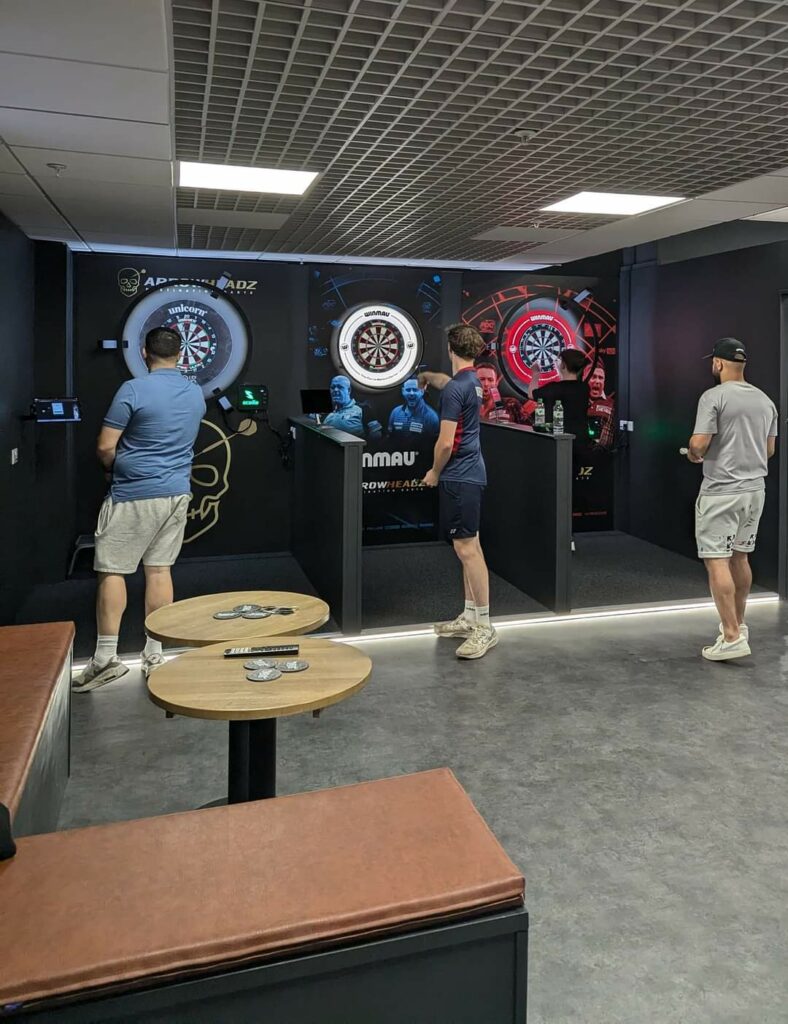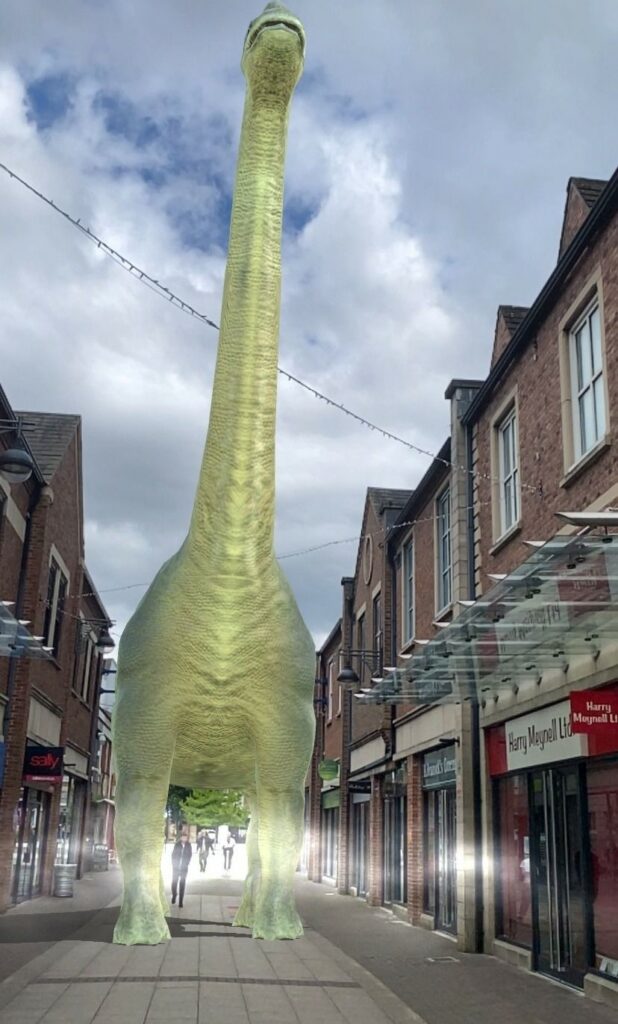Reflecting on my 17-year journey since joining Toolbox Marketing, I’ve had a front-row seat to the dramatic transformation of shopping centres. What started as a simple place to shop has evolved into a space that connects people, drives community engagement and creates unforgettable experiences. The industry I entered almost two decades ago was vastly different. Back then, shopping centres revolved around the retail core, with their success largely determined by how well they could attract shoppers with discounts, variety, and convenience. But over the years, I’ve seen first-hand how e-commerce, shifting consumer preferences, and even global events like the COVID-19 pandemic have forced shopping centres to rethink their purpose.
For me, this evolution has been as much about survival as it has been about seizing new opportunities. I’ve worked closely with clients to reimagine their spaces, helping them adapt to an environment where shopping alone is no longer enough to sustain footfall. From adding cinemas, restaurants and entertainment experiences to incorporating technology and creating events that drive community engagement, I’ve seen how shopping centres have had to adapt to remain relevant. I believe the centres that succeed in the future will be those that understand the importance of blending commerce with entertainment, social interaction and cultural engagement.
THE TRANSFORMATION: FROM RETAIL HUBS TO EXPERIENCE-DRIVEN SPACES
Historically, shopping centres were designed with one primary purpose: commerce. Anchor stores like department stores were the main attractions, surrounded by smaller speciality retailers. The model was simple – consumers came to shop, often driven by necessity, and retail was the focal point of their visit.
However, several factors have prompted a transformation in this model. The growth of online shopping, for instance, has made it more convenient for consumers to purchase items from the comfort of their homes. With this convenience, the traditional shopping centre has faced the challenge of remaining relevant. As a result, many shopping centres have shifted their focus from purely transactional spaces to destinations that offer immersive, experience-oriented environments.
Today’s modern shopping centres are carefully curated environments designed to stimulate multiple senses. They offer a variety of leisure activities including cinemas, fine dining, fitness centres, art installations live performances and recreational spaces. This shift to experience-based offerings is often described as the “retailtainment” phenomenon a combination of retail and entertainment designed to draw people in for reasons beyond just shopping.

THE DRIVING FORCES BEHIND THE CHANGE:
Increased Focus on Social Spaces: Shopping centres have evolved into social hubs, offering far more than just retail. Modern consumers are increasingly drawn to spaces where they can connect with others, whether it’s dining with friends, attending cultural events or simply relaxing in well-designed public areas. This social aspect has become a cornerstone of the contemporary shopping centre experience.
A standout example of this transformation is Castle Quarter in Norwich. Formerly Castle Mall, a traditional shopping centre, has successfully repositioned itself as a leisure destination. Since its rebranding, footfall has increased by 8.8% in 2023 compared to 2022, significantly outpacing Norwich’s overall footfall increase of just 1.2%. Additionally, the average dwell time has grown from 55 minutes to 1 hour and 25 minutes.
The changes at Castle Quarter have been substantial. What was once a ‘dead’ shopping centre is now Norwich’s leading social, leisure, and lifestyle destination, spread over five vibrant floors. The transformation began with the introduction of Superbowl UK, Boom Battle Bar, Putt Putt Social and a 24-hour PureGym. Over the past few years, the centre has continued to evolve, adding new attractions like Hotpod Yoga, ArrowHeadz, a darts-led social hub, and Drive Lounge, a virtual driving experience.

The Rise of E-Commerce: With the exponential growth of online shopping, physical retail spaces have been forced to rethink their value proposition. In 2023, online shopping accounted for approximately 26.5% of all UK retail sales, according to the Office for National Statistics (ONS). This represents a significant increase from pre-pandemic levels, underscoring the growing dominance of e-commerce and the pressure it has placed on traditional brick-and-mortar stores.
Rather than trying to compete with the speed and convenience of online shopping, successful retail spaces have shifted their focus to offering memorable, in-person experiences that can’t be replicated online. By providing entertainment, community spaces, and interactive activities, shopping centres create a unique value proposition that gives them an edge over e-commerce.
Changing Consumer Preferences: Millennials and Gen Z, two of today’s most influential consumer demographics, place a high value on experiences over material goods. These generations increasingly prioritise social and leisure activities, making experience-driven offerings a powerful tool for capturing their attention and spending power. A 2022 Eventbrite report found that 78% of UK Millennials and Gen Z consumers would rather spend money on experiences, such as live events or activities, than on physical items.
This shift highlights the growing importance of integrating unique, shareable experiences into retail environments. Shopping centres that offer live events, interactive art installations or virtual reality zones can effectively meet the desires of these experience-focused consumers. One successful example is The Buttermarket in Ipswich, which frequently activates its empty units to host art galleries in collaboration with the local university. Additionally, the centre partners with charities and emergency services for pop-up awareness days, and maintains a regular calendar of events year-round, turning mall space into a dynamic hub for community engagement.

Technological Integration: Modern shopping centres are increasingly leveraging technology to elevate customer experiences. Interactive digital displays, augmented reality (AR), and app-driven loyalty programs help make visits more immersive and engaging. These innovations enable a personalised shopping experience, seamlessly combining convenience with entertainment. A 2023 report by the Retail Technology Show found that 68% of UK consumers are more likely to visit shopping centres that incorporate such technological enhancements. This highlights the growing influence of digital innovation in transforming retail spaces and creating interactive, tailored experiences for shoppers.
A fantastic example of successful technological integration is Wellington Square in Stockton-on-Tees. Partnering with the local discovery app ‘Love Exploring,’ the centre brought its events calendar to life by introducing augmented reality features where shoppers could discover virtual fairies and dinosaurs throughout the mall. Much like the popular Pokémon Go, this initiative encouraged visitors to explore the space using their mobile devices, blending entertainment with the physical retail experience.

THE SIGNIFICANCE OF THIS SHIFT
The transformation of shopping centres into leisure destinations has far-reaching implications for both consumers and businesses:
Economic Revitalisation: This evolution has breathed new life into shopping centres, many of which were struggling in the face of e-commerce competition. By offering experiences that attract visitors for reasons beyond shopping, shopping centres have successfully repositioned themselves as community hubs. This shift can help stimulate local economies by increasing footfall and attracting new types of businesses.
Enhanced Consumer Engagement: Today’s shopping centres focus heavily on creating emotional connections with consumers. Through interactive experiences, entertainment and personalised services, they encourage customers to spend more time and money within the space. A more engaged consumer is more likely to make purchases and return for future visits.
Redefining Leisure and Social Interaction: The evolution of shopping centres into leisure destinations reflects broader cultural shifts in how people spend their time and interact socially. Shopping centres now serve as places where people go to relax, have fun and engage with others, shifting from being purely transactional spaces to dynamic environments for leisure and connection.
Diversification of Revenue Streams: For property owners and retailers, the addition of leisure and entertainment options provides a diverse range of revenue streams. Offering spaces for dining, entertainment, fitness and community events creates new profit opportunities and makes the shopping centre a more sustainable business model in the long term.
CONCLUSION: MY PERSPECTIVE ON THE FUTURE OF SHOPPING CENTRES
What excites me most is seeing the role shopping centres now play in redefining urban life. They are no longer just commercial spaces, they’ve become the beating hearts of communities, places where people gather, relax and experience something beyond a transaction. I feel incredibly fortunate to have been a part of this evolution and to have helped shape how some of these spaces now operate.
As we look ahead, I firmly believe this transformation will continue to evolve. Shopping centres will not only adapt to technological advances but will become even more integrated into the social fabric of our cities. The lines between shopping, leisure and culture will blur further, and I look forward to continuing to contribute to the ever-changing landscape of the industry. This shift has been both challenging and rewarding, but it’s clear to me that the future of shopping centres lies in their ability to offer people more than just a place to shop – they need to offer a place to belong.
